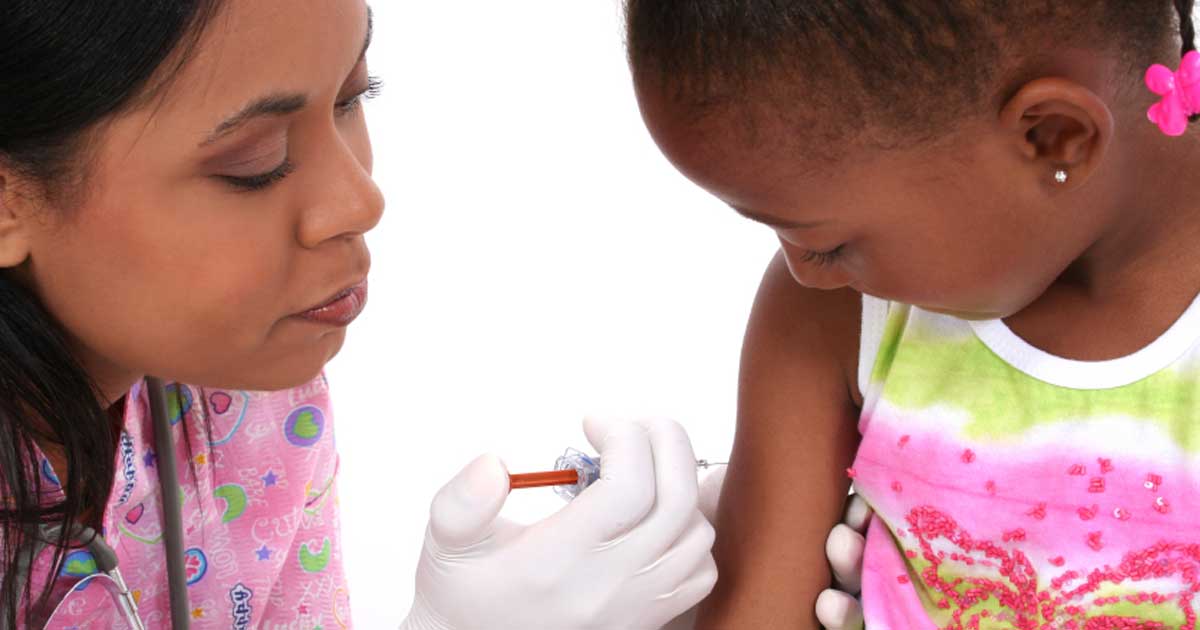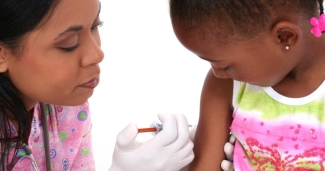Shots: Immigrant Community Under Fire for Measles Outbreak. What Can Health Care Providers Do?

[Editor’s Note: August is National Immunization Awareness Month. See the bottom of this article for a list of resources for providers.]
In the suburbs around Minneapolis, Minnesota, an alarming measles epidemic has public health authorities on edge. As of mid-July, 79 cases have been confirmed, primarily among small children. Like many recent US outbreaks, the spread is the result of a drop in vaccination rates in the region. Unlike most communities that have recently experienced outbreaks of pertussis, measles, and other preventable diseases, this pocket of low vaccine rates is not among primarily white families. Sixty-four of the 79 patients are Somali.
Are Somali immigrants or refugees bringing in vaccine-preventable disease? Largely, health authorities find the answer is ‘no’. So far, although the source of the outbreak is unknown, 85 percent of those affected are US-born Somali children. Before 2008, first-dose vaccination of the Measles, Mumps, and Rubella (MMR) coverage among Minnesota-born Somali children in the region of the outbreak exceeded 90 percent. Now it’s down to about 40 percent. The Centers for Disease Control and Prevention, leaning on studies of parents’ vaccine choices, noted that “the decline in vaccination coverage was in response to concerns about autism, the perceived increased rates of autism in the Somali-American community, and the misunderstanding that autism was related to MMR vaccine.”
Studies have consistently and repeatedly documented that there is not a relationship between vaccines and autism. But this incident among an immigrant community highlights the importance of the relationship between clinicians and patients to assure that critical health messages are passed on -- and that the community’s health concerns are listened to and addressed. As the CDC noted, parents had been expressing concern over an increase in autism among the community’s children, and anti-vaccine advocates had played a part in swaying parents to consider vaccines as the source. Critically -- here’s where the breakdown happened -- clinicians weren’t able to assure their fears. In a small 2014 study in the community where the outbreak is occurring, Somali parents were asked why they chose to vaccinate their children. Fifty percent chose “because I trust my health care provider’s judgment.” Only 28 percent said it was to keep the child from getting sick, or to prevent the spread of disease in the community.
The relationship of the community with the providers at local health care facilities is central to assuring the health of the community. This seems like an obvious statement, but the disconnect here resulted in serious public health consequences. In a recent article produced by the Minnesota radio station WLRN, local health advocates argued over whether community health outreach was sufficient. Community activist Abdirizak Bihi said local efforts had dried up, while the local health center outreach director countered that their efforts were still robust, although she admitted that their community engagement is reliant on grant money, which can dry up. The article then turns to the dramatic health disparities that the community faces, and the efforts health authorities are taking to combat them, including extensive cultural sensitivity trainings for health care providers that included basic Somali language instruction. MMR vaccine rates are up since the start of the outbreak, but what about the long-term relationship between the community and its practitioners?
Culturally competent care only works when it’s consistent. A World Health Organization report on Community Health Workers notes that “there is robust evidence that CHWs can undertake actions that lead to improved health outcomes, especially, but not exclusively, in the field of child health,” but only if the CHW is well trained, the quality of services provided is high “and – very important – adequately and continuously supported.” It also reminds us that CHWs are far more successful when the community is galvanized -- and, when the community is not already galvanized, it’s challenging for the CHW to bring the community together.
What can we learn from this most recent measles outbreak? US immigrant communities are incredibly diverse so it’s hard to speak to them as a whole, but the Minnesota epidemic does remind us of the importance of some basic strategies in immigrant health. Clinicians that are trusted and engage in two-way communication, robust and well-funded community outreach that is driven by community members, and attention to the cultural, linguistic, and other barriers that keep communities from developing those relationships are key factors to assure that immigrant communities stay informed and connected, keep to their vaccination schedules, and stay healthy.
Resources
There are many high quality resources to start the conversation with a patient (or a parent) reluctant to vaccinate. Studies are showing that just countering patients’ fears by showing safety data is not always an effective measure. Some recent papers guide providers in understanding and communicating with the reluctant patient:
- Countering antivaccination attitudes found that those skeptical of vaccines changed their attitudes when shown photographs of children struggling against the vaccine-preventable diseases, and the stories as told by the parents of the children struggling against the disease.
- Using Behavioral Insights to Increase Vaccination Policy Effectiveness breaks down the different types of patient who may refuse vaccines, and gives insight and communication strategies for each type.
- In 2015, the peer-reviewed journal Vaccine released a special issue dedicated entirely to vaccine hesitancy.
The American Academy of Pediatrics’ tips on addressing vaccination concerns includes a section on talking to hesitant parents. The AAP’s graphs and visualization of the CDC vaccine schedule may be useful for clinicians. They also provide guidance on coding when talking to parents about vaccination.
The CDC’s Provider’s Guide has many additional resources.
The US Department of Health and Human Services’ Specialized Information Services has a wealth of resources on culturally competent care: Multicultural Resources for Health Information.
Resources in Spanish for patients are plentiful on the internet. AAP’s healthychildren.org is available in Spanish. The California-specific Vacunas y Mi Salud is full of useful information for all, in Spanish.
Infographics can visually relate a lot of information to patients and parents in an engaging way. Here is one on Vaccines and Autism.
Like what you see? Amplify our collective voice with a contribution.
Got some good news to share? Send it to us via email, on Facebook, or on Twitter.
Return to the main blog page or sign up for blog updates here.
- Log in to post comments

